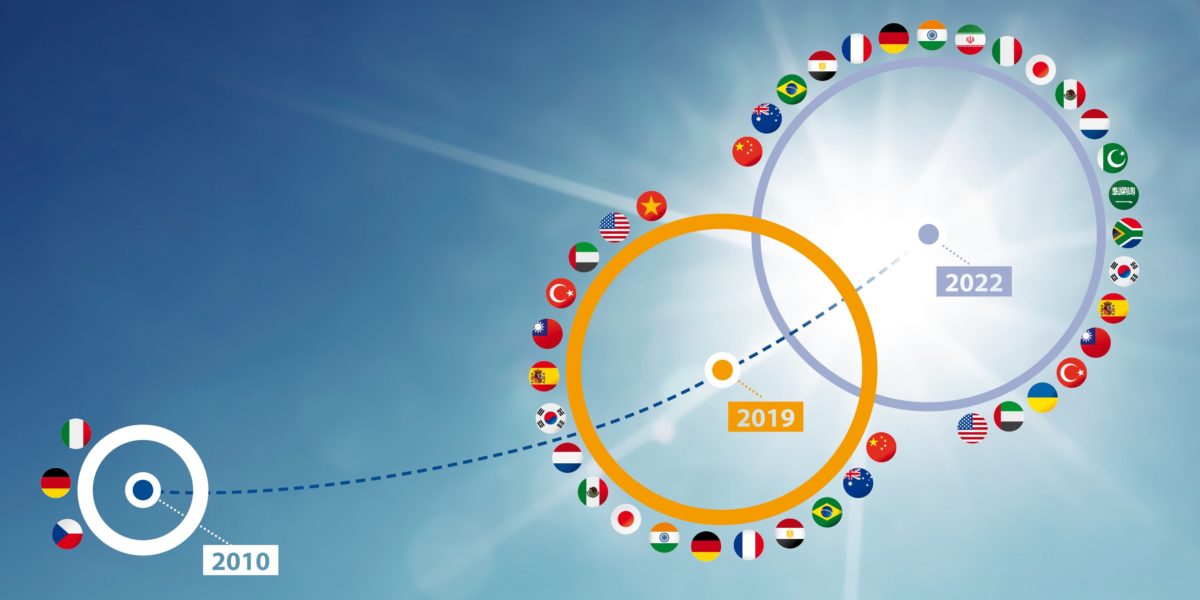Ukraine saw more than 700 MW of new PV installed in 2018, and in the first four months of 2019, the market commissioned more than 600 MW. If one counted installation figures from April 2018 to April 2019, the figure would go beyond the magic 1 GW mark. Much of this progress has been made possible through a very generous feed-in tariff scheme, remunerating ground-mount solar installations with a fixed rate of €0.1502/kWh until 2030.
Additionally, the conditions for power purchase agreements have improved considerably since 2017. “(They) stood the bankability test with many international lenders and private equity investors, and have been found acceptable for financing the renewable energy projects in Ukraine, including those undertaken by the EBRD, NEFCO, Natixis, Total Eren, Scatec Solar, AlGihaz and NBT,” writes Svitlana Teush, Head of Construction, Renewable Energy and Infrastructure, at Redcliffe Partners Law Firm.
On April 25, 2019, Ukraine amended Law No 2712-VIII On Amendments on Certain Laws of Ukraine on Ensuring Competitive Conditions for Electricity Production from Renewable Energy Sources. The change went into effect on May 22, 2019. Central to the new regulations are the changes to the feed-in tariff. Ukraine’s government had deemed the burden on electricity price development to be too high and adjusted the remuneration scheme. Ukraine has now decided to move towards an auctions system, starting from this year.
The government will determine a quota on a five-year term basis. The law prescribes minimum quotas for the capacity additions for various renewable energy sources. Solar, like wind, is assured a minimum of 15% of any renewable energy quota announcement. For the first batch of auctions from 2020 to 2022, the country has already set the minimum quota at 30%. New solar projects with capacities larger than 1 MW can then participate in the one-stage sealed-bid auctions. Winning bids will receive feed-in tariff support as high as their bids for periods of 20 years. The offtake of the generated electricity is guaranteed by the government. Per the new law, auctions will be held twice a year, from around April 1 and October 1, but starting this year on July 1.
“As with the producer under the FIT, the winner of an auction can obtain the local content bonus, namely a 5% increment to the auction price where the local content is at the level of 30%-50%, or a 10% increment where that content is higher. Local content is not mandatory,” Teush adds. Successful bidders must commission their photovoltaics systems within two years to be eligible for support, the law further stipulates. Also, to stimulate competition, the maximum quota offered to a single bidder cannot exceed 25% of the total annual quota of the respective year.
This content is protected by copyright and may not be reused. If you want to cooperate with us and would like to reuse some of our content, please contact: editors@pv-magazine.com.




By submitting this form you agree to pv magazine using your data for the purposes of publishing your comment.
Your personal data will only be disclosed or otherwise transmitted to third parties for the purposes of spam filtering or if this is necessary for technical maintenance of the website. Any other transfer to third parties will not take place unless this is justified on the basis of applicable data protection regulations or if pv magazine is legally obliged to do so.
You may revoke this consent at any time with effect for the future, in which case your personal data will be deleted immediately. Otherwise, your data will be deleted if pv magazine has processed your request or the purpose of data storage is fulfilled.
Further information on data privacy can be found in our Data Protection Policy.